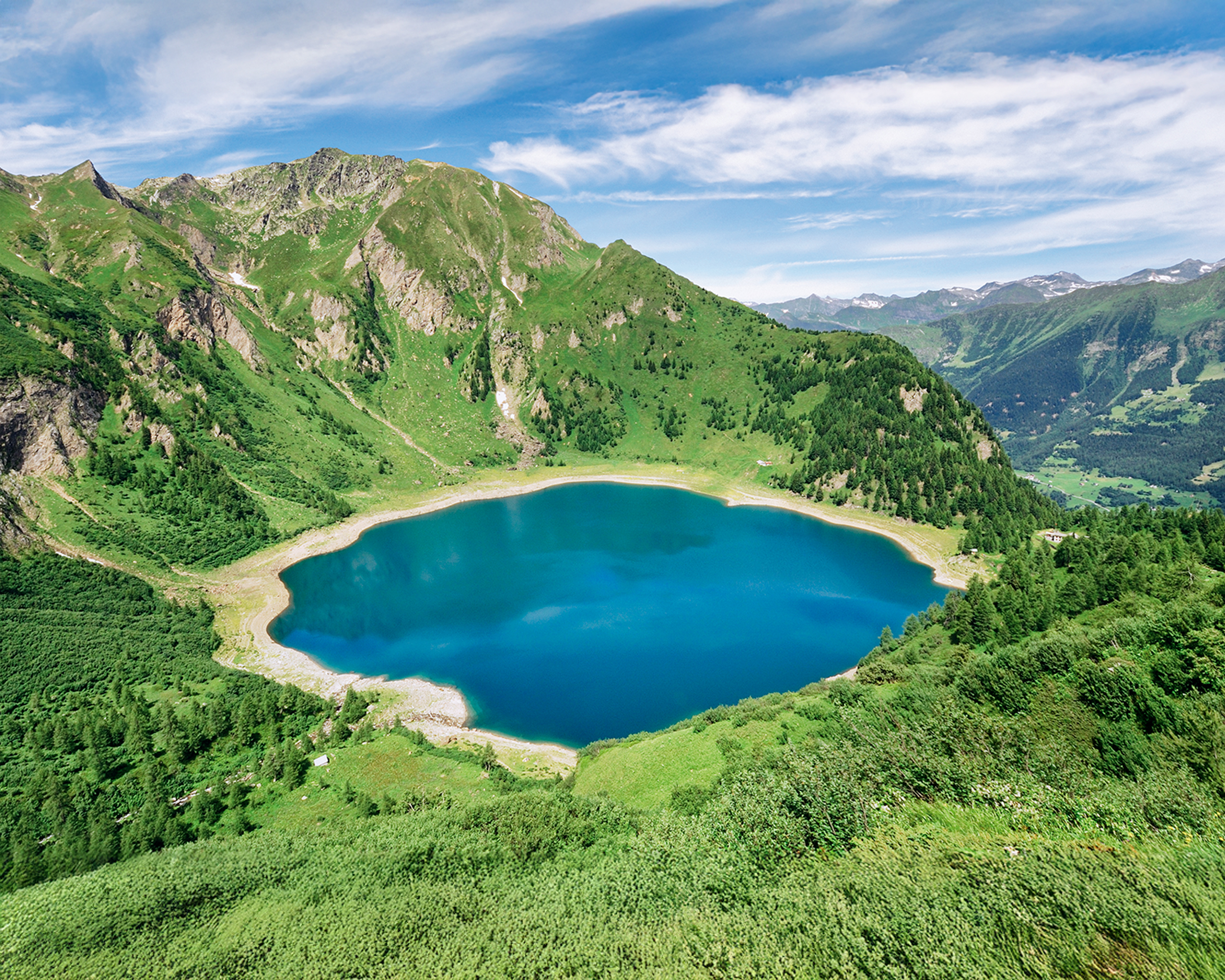
Fishing with science: How to choose the right lake for every season
Science & Fishing in Ticino’s Alpine Lakes
How many times has it happened? You arrive at a breathtaking alpine lake—the air is crisp, the view is postcard-perfect—but after hours of casting you ask yourself: “Where are the fish?”
It’s a question every angler has asked. And the answer isn’t just instinct—it’s science.
At Ticino Fishing Guides, we believe true mastery comes from combining experience with knowledge. That’s why we’re sharing not only our on-the-water insights, but also the scientific findings that shape our approach.
Drawing on research we conducted on our own lakes, we’ve built a practical guide to stop guessing—and start fishing strategically.
The Three Pillars of Lake Life: Temperature, Oxygen, and Depth
1) Temperature: the fish thermostat
Salmonids—like brown trout and char—are cold-blooded. Water temperature is both their accelerator and their brake.
As research shows, every species has a “critical” temperature range. For example, brown trout (Salmo trutta) can tolerate peaks up to about 26–30 °C, but they feed most actively and run optimal metabolism in much cooler water.
➡️ Understand temperature and you’ll understand where fish are active—and hungry.
2) Dissolved Oxygen: the air they breathe underwater
Oxygen isn’t uniform in a lake. Warm water holds less oxygen than cold water.
In summer this can create true “dead zones” where fish can’t survive for long.
➡️ Know where oxygen concentrates, and you’ll know where fish can live.
3) Depth & Stratification: the lake’s invisible layers
In summer, alpine lakes aren’t uniform masses of water—they separate into layers:
- Epilimnion: warm surface layer
- Hypolimnion: cold deep layer
- Thermocline: the sharp transition where temperature drops rapidly
Profiles from the Ticino lakes we analyzed show that the thermocline is the key to summer fishing.
The Science-Minded Angler’s Field Guide: Lake by Lake, Season by Season
Late Spring–Early Summer: the great awakening
After the long winter, snowmelt triggers a burst of activity. Cold water mixes and re-oxygenates more evenly.
For fish—hungry after months of reduced activity—it’s the start of the chase.
- Ecological principle: focus on the littoral (shoreline) zones, which warm faster and attract insects and crustaceans.
- Applied science: in more natural, lightly stocked lakes, trout tend to hold in these food-rich littoral areas.
➡️ Spring is a golden window for fishing Ticino’s lakes.
Summer: treasure hunting in the thermocline
This is stratification season. The surface warms and loses oxygen; the deepest layer can even become anoxic.
- Where to look: fish tuck into the thermocline, the comfort zone of temperature and oxygen.
- Key lakes: Tremorgio and Tom, where a well-defined thermocline is vital for salmonids.
- Pro tip: find the temperature break and concentrate your effort there.
➡️ Ignore the thermocline and you’re fishing blind.
Autumn: the last big feed
With the first cold fronts, turnover mixes the water column and stratification disappears.
- Ecological principle: fish roam the entire lake more freely—this is their last chance to pack on energy before winter.
- Strategies: spring spots come back into play—shorelines, littoral zones, and inlets.
- Applied science: with lower angling pressure in autumn, your odds of encountering larger fish improve.
➡️ Autumn is prime time for trophy-minded anglers.
Ticino Fishing Guides: beyond science, on-water experience
Understanding these principles is the first step toward becoming a more observant, effective angler. The real magic happens when you unite theory with practice.
Here’s what we do at Ticino Fishing Guides:
- We don’t just take you fishing.
- We guide you through a masterclass in alpine lake ecology.
- We teach you to read nature’s signals and to use technology wisely.
👉 Want an experience that goes beyond a simple fishing trip?
Discover our guided outings and book your science-driven adventure — click here.
FAQ: Fishing Ticino’s Alpine Lakes
1) What’s the best season to fish Ticino’s alpine lakes?
Spring and autumn, when water is cooler and well oxygenated.
2) Where do salmonids hold in summer?
In the thermocline—the band with optimal temperature and oxygen.
3) Do I need a fish finder to be successful?
Not mandatory, but it helps pinpoint the thermocline precisely.
4) Which Ticino lakes are ideal for alpine lake fishing?
Come discover them with us → click here.
5) Does fishing pressure affect catches?
Yes. In heavily pressured lakes, average fish size tends to decrease.
6) Why choose Ticino Fishing Guides?
Because we combine science, passion, and hands-on experience, turning every outing into a course in fishing and nature.
The information in this article is for educational purposes only. Every angler must comply with current fishing regulations, including open seasons, size limits, and area-specific rules.
At Ticino Fishing Guides, we promote sustainable, mindful fishing in full accordance with cantonal and federal laws. Always consult official regulations before each trip to ensure you respect both the environment and the law.
Ticino Fishing Guides
E-mail: info@ticinofishingguides.ch
Adress: Strécia dal Ghétt 18, 6822 Arogno (TI-CH)
